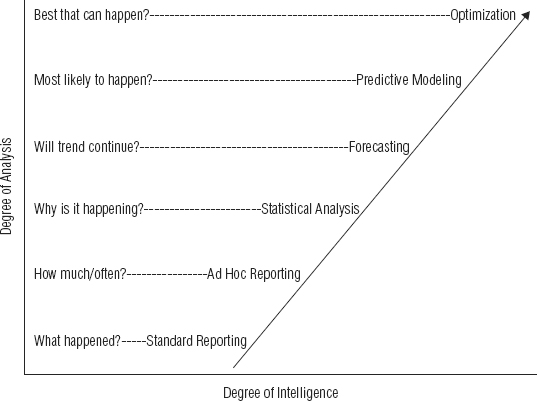VALUE HIERARCHY
Each type of report has a certain value, depending on what we want to know. Yet all things being equal, there is a value hierarchy within reporting and analysis. Exhibit 11.3 is an illustration of that hierarchy.
Exhibit 11.3 Report Value Hierarchy

Only since about 2010 has predictive analytics appeared on most HR agendas. Nevertheless, it is becoming more popular, even though fewer than 25% of HR departments have more than a passing experience with it. Analytics is not magic. It is applied in the same manner as other problem-solving, decision-making tasks.
A good way to start is to develop a prediction scenario. This can include projected values based on given assumptions. Depending on how complex and how important the HR issue is, you may have to make a proposal to obtain funding. In such cases, you should use leading indicators to show expected future outcomes. Common leading HR-related outcome areas include
- Leadership
- Engagement
- Readiness
- Attrition
- Learning and development
- Culture (great place to work)
Leadership improvement always attracts favorable attention. You can tie it to engagement because without respected leadership you cannot generate engagement. Then, increasing engagement should have an effect on QIPS (quality, innovation, productivity, service). Readiness ensures that there will be little or no break in performance if a mission-critical person ...
Get Win with Advanced Business Analytics: Creating Business Value from Your Data now with the O’Reilly learning platform.
O’Reilly members experience books, live events, courses curated by job role, and more from O’Reilly and nearly 200 top publishers.

